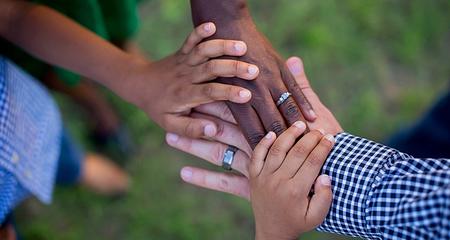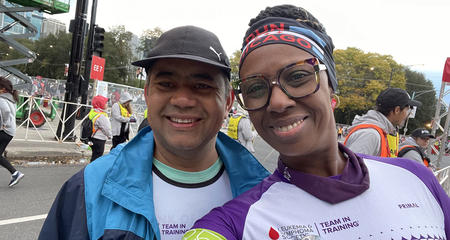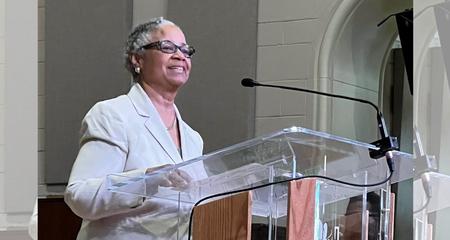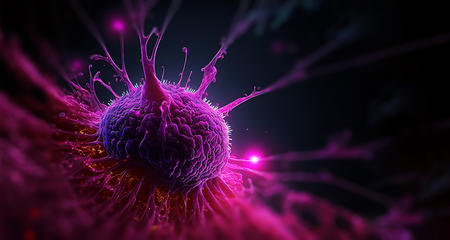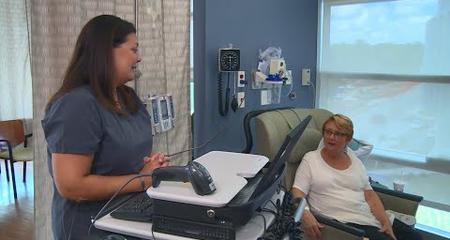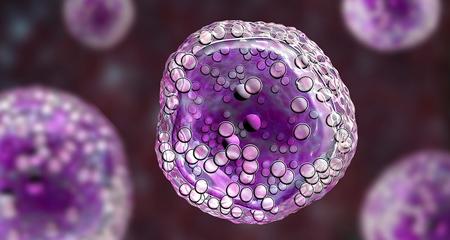Some diseases require that we use donated stem cells for the transplant. Typically, the best match is a full sibling (brothers and sisters with the same mother and father). The transplant recipient’s insurance typically covers the cost of all tests, medical evaluations and the donation procedure. We contact the insurance to get approval before we start the testing process. Most insurance plans do not cover travel and lodging, so these costs may be your responsibility.
Your body replenishes the cells you donate in four to six weeks.
Human Leukocyte Antigen (HLA) Typing and Matching
HLAs are proteins — or markers — found on most cells in your body. You inherit HLAs, found on the surface of your cells, from your parents. They make up your tissue type, which is different from your blood type. Siblings have a 25% chance of inheriting the same HLA molecules as your sibling and a 50% chance of inheriting half of the same HLA proteins as your sibling (known as a haplo match).
Your immune system uses these markers to recognize which cells belong in your body and which do not. If your tissue type matches that of the transplant recipient, the recipient’s body is less likely to reject the cells, and you may be a donor.
HLA Testing
HLA testing can be done by a buccal swab or a blood draw. The recipient’s physician will determine the most appropriate form of testing. Additional testing may be required for more accurate results, so both forms of testing could be ordered.
- Buccal Swabs: This test can be performed at home by swabbing the inside of your cheek. These cheek cells will provide DNA for HLA testing.
- Blood Draws: You will be scheduled for an appointment at our Clinical Cancer Center lab for your blood draw. If you do not live locally, a kit will be sent to you or we will set you up for an appointment at a contracted provider, to have your blood drawn.
Testing is done by the blood health experts at Versiti in Milwaukee and will take approximately two to three weeks to get results. Once complete, you will get the results — not the transplant recipient or the care team. If you are not a suitable donor, we simply say that you are not eligible without providing any specifics to the transplant recipient.
Donating Bone Marrow or Stem Cells
If you are chosen as the donor, a coordinator will work as your advocate through this process. Once we confirm the transplant date, the coordinator contacts you to set up a medical evaluation and discuss the donation process.
The transplant physician will ask for either a bone marrow donation or a peripheral blood stem cell (PBSC) donation depending on the disease , donor type and transplant conditioning regimen.
Bone Marrow Donation Procedure
Donating bone marrow is a surgical procedure done under general anesthesia. We position you on your stomach, and our team uses special needles to withdraw liquid marrow (where stem cells are made) from both sides of the back of the hip bone.
Once complete, we monitor you until the anesthesia wears off. If your blood counts are too low, you may need to receive a unit or two of blood to replenish the marrow you lost. Prior to donation, you will donate blood to have on hand if this happens.
We will discharge you once you are able to walk, go to the bathroom, eat and drink. You may experience some discomfort in your lower back for a couple of days after the bone marrow harvest; this is normal. Acetaminophen or an icepack will help. If you had stitches, you will come back to have them removed in four to five days.
You should resume normal activity within a few days. If you experience prolonged pain, numbness in your lower extremities, fevers, swelling or bleeding from the puncture sites, notify the clinic immediately.
Peripheral Blood Stem Cell Donation Procedure
The same blood-forming cells that are found in bone marrow are also found in circulating (peripheral) blood.
Peripheral blood stem cell (PBSC) donation is a nonsurgical procedure done in an outpatient clinic. You will receive daily injections of a medication called Filgrastim/Neupogen for four days, to increase the number of stem cells in the bloodstream.
You may experience headaches, bone or muscle aches for several days before PBSC donation. These are side effects of the medication and will go away shortly after your PBSC donation. We will provide instructions to ease bone pain. You may take acetaminophen (Tylenol) for discomfort. Avoid ibuprofen, NSAIDS and aspirin.
On the fifth day, you will donate through an apheresis procedure. The apheresis machine removes your blood through a needle in one arm, separates out the stem cells for collection and returns the remaining blood to you through a needle in the other arm. You will be on the machine for four to five hours and remain in bed for the collection. Nurses will monitor you during the entire procedure.
We add an anticoagulant (blood thinner) to your blood as it enters the machine to keep it from clotting during the procedure. This may cause a sour taste in your mouth. The anticoagulant can also lower your blood calcium, and you may experience light-headedness, nausea, muscle cramping or a tingling feeling around the lips, hands or feet. Tell the nurses immediately if you feel any of these symptoms. Oral or intravenous calcium will bring quick relief of these side effects.
After each collection, our Stem Cell Processing Lab processes the cells to obtain an accurate cell count. It can take one to three days to collect the number of stem cells we need. We will contact you each evening with the collection results.
Join the Registry to Donate

Be The Match® is the registry operated by the National Marrow Donor Program. It is easy to register to be a donor. Simply click on the link, fill out an online form and return four swabs, which are sent right to your home. Around 70 percent of people who need bone marrow transplants need a matching donor who isn’t a family member. You could “be the match” and save a life.
More to Explore
